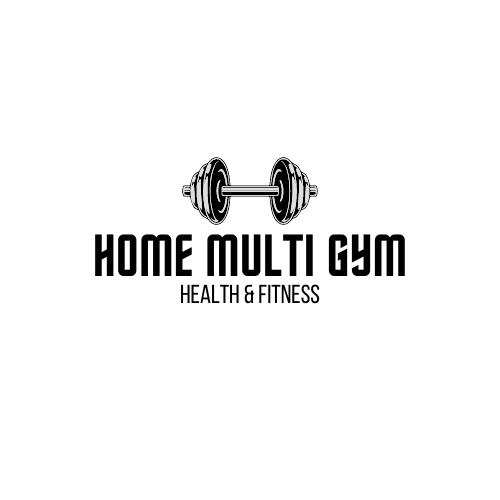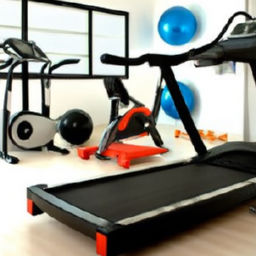Have you ever wondered how much space a home multi-gym takes up and whether it will fit into your room? Well, in this article, we will explore the overall footprint of a home multi-gym and discuss how it can be integrated into different room layouts. So, if you’re considering purchasing a home multi-gym but are concerned about the space it may require, read on to find out more!
Curious to know how a home multi-gym fits into different room layouts and how much space it actually occupies? Look no further! In this article, we will delve into the overall footprint of a home multi-gym and examine its compatibility with various room layouts. Whether you have a small apartment or a spacious home, we’ll provide you with the information you need to make an informed decision. Stay tuned to discover the perfect spot for your home multi-gym and maximize your workout space!
Why invest in a home multi-gym?
In today’s fast-paced world, finding time to visit a gym can often be a challenge. That’s why many fitness enthusiasts are investing in home multi-gyms. Having your own fitness equipment at home offers a range of benefits and makes it much easier to stay committed to your fitness routine. In this article, we will explore the overall footprint of a home multi-gym and how it can fit into various room layouts.
Benefits of having a home multi-gym
Owning a home multi-gym provides several advantages over a traditional gym membership. One of the most significant benefits is the convenience of exercising at home. With a home multi-gym, you can simply walk into your dedicated workout space and start your fitness routine. This eliminates the need to commute to a gym, saving you time and allowing you to exercise whenever it suits your schedule.
Additionally, home multi-gyms offer privacy. Some people may feel uncomfortable exercising in front of others or have specific fitness goals that require focused attention. With a home multi-gym, you can exercise without any distractions or self-consciousness, making it easier to stay motivated and reach your fitness goals.
Convenience of exercising at home
Having a home multi-gym allows you to integrate exercise seamlessly into your daily routine. Whether you prefer to work out in the morning, during your lunch break, or in the evening, having a gym at home ensures that you can fit in a workout, regardless of your busy schedule.
Furthermore, having a home multi-gym eliminates the need to wait for equipment to become available. At crowded commercial gyms, waiting for your turn on machines or weights can be frustrating and time-consuming. With a home multi-gym, you have exclusive access to all the equipment, allowing for a smooth and uninterrupted workout experience.
Understanding the dimensions of a home multi-gym
Before investing in a home multi-gym, it’s crucial to understand its overall footprint. The dimensions of a multi-gym vary depending on the type and design you choose. Some multi-gyms are compact and designed to fit in smaller spaces, while others may require more room.
Measuring the space required for installation
When determining the space required for a home multi-gym, it’s essential to consider not only the dimensions of the equipment but also the clearance needed for exercises and movement. You’ll want to ensure that there is enough space around the equipment for comfortable and safe workouts.
Start by measuring the available floor space in the room where you plan to install the multi-gym. Take into account any existing furniture or obstacles that may need to be rearranged or removed. Then, consider the ceiling height, as some multi-gyms may require additional clearance for exercises that involve overhead movements.
Different types of home multi-gyms
There are several types of home multi-gyms available on the market, each with its unique characteristics and advantages. Understanding the different types will allow you to choose the most suitable option for your needs.
Free weight multi-gyms
Free weight multi-gyms typically consist of a rack, a bench, and various weight plates and dumbbells. This type of multi-gym offers a wide range of exercises that target different muscle groups. However, free weight multi-gyms tend to take up more space due to the size of the weights and the necessary clearance for exercises.
Cable-based multi-gyms
Cable-based multi-gyms rely on a system of pulleys and cables to provide resistance. These multi-gyms are often more compact and space-efficient compared to free weight options. The cables allow for a wide variety of exercises and movements, making cable-based multi-gyms a versatile choice for different fitness routines.
Resistance band multi-gyms
Resistance band multi-gyms are compact and portable, making them an ideal choice for those with limited space. These multi-gyms utilize resistance bands of varying strengths to provide resistance during workouts. They are lightweight, easy to set up, and can be easily stored when not in use.
Combination multi-gyms
Combination multi-gyms incorporate different elements of the above types, allowing for a wider range of exercises and targeting various muscle groups. These multi-gyms are versatile and can offer a comprehensive workout experience in a compact space.
Factors to consider before choosing a home multi-gym
When selecting a home multi-gym, there are several factors to consider to ensure it fits seamlessly into your available space and suits your workout preferences.
Available floor space
Measure the floor space in your chosen room to ensure it can accommodate the dimensions of the multi-gym you intend to purchase. Make sure there is enough space for comfortable movement and to perform exercises without hindrance.
Ceiling height
Check the ceiling height to ensure it provides enough clearance for any overhead exercises or attachments that may be included with the multi-gym. Some exercises require additional overhead space, so it’s important to consider this when choosing a multi-gym.
Weight capacity
Consider the weight capacity of the multi-gym, particularly if you plan on using heavy weights or engaging in intense workouts. Ensure that the multi-gym you select can handle the weight you intend to lift and the exercises you plan to perform.
Number and types of exercises
Evaluate the number and variety of exercises that can be performed on the multi-gym. Determine whether it provides the flexibility and versatility to target all major muscle groups and cater to your specific fitness goals.
How to integrate a home multi-gym into smaller rooms
If you have limited space in your home, you can still integrate a home multi-gym by utilizing vertical space or opting for space-saving options.
Utilizing vertical space with wall-mounted options
Wall-mounted or wall-anchored multi-gyms are excellent choices for smaller rooms. These multi-gyms attach to the wall, allowing you to utilize vertical space while saving floor space. Install the multi-gym in an area where the walls are strong and secure to ensure stability during workouts.
Folding or collapsible multi-gyms for easy storage
Another option for smaller rooms is to invest in a folding or collapsible multi-gym. These multi-gyms can be easily folded or collapsed when not in use, making them compact and easy to store. Ensure that the folding mechanism is sturdy and secure for safety during workouts.
Maximizing the functionality of a home multi-gym in larger rooms
If you have a more spacious room available for your home multi-gym, you can create a dedicated workout area and arrange the equipment for optimal usage.
Creating a dedicated workout area
Designate a specific area of the room as your workout zone. This not only helps you mentally prepare for exercise but also keeps the rest of the room free from obstacles. Consider adding mirrors to the walls to monitor your form and progress during workouts.
Arranging equipment for optimal usage
Position the multi-gym and other equipment in a way that allows for efficient movement and flow during your workouts. Arrange the equipment based on the exercises you prioritize or the muscle groups you want to target. This organization can ensure that you have a seamless workout experience in a larger room.
Potential challenges of fitting a home multi-gym into various room layouts
Depending on the layout of your room, there may be certain challenges when fitting a home multi-gym. However, with careful planning and adaptation, these challenges can be overcome.
Narrow or irregularly shaped rooms
In narrow or irregularly shaped rooms, it may be necessary to rearrange furniture or remove unnecessary items to create enough space for the multi-gym. Consider utilizing corners or alcoves for installation, as they can optimize the available space.
Low ceilings or low hanging objects
If your room has low ceilings or low hanging objects, it may restrict certain exercises or equipment options. Ensure that the ceiling height is adequate for your multi-gym’s requirements. In case of low hanging objects, consider repositioning or removing them to create a safe and comfortable workout environment.
Tips for adapting the layout of a room for a home multi-gym
With a few adjustments, you can adapt the layout of a room to accommodate a home multi-gym.
Moving furniture or clearing clutter
If you have furniture occupying the space where you want to install the multi-gym, consider moving it to another part of the room or to a different area of your house. Clearing the clutter from the room will provide you with the necessary space and a clean, organized environment for your workouts.
Ensuring adequate ventilation and lighting
When setting up your multi-gym, make sure the room has proper ventilation to keep you cool and comfortable during intense workouts. Arrange the equipment in a way that allows air to circulate freely. Additionally, ensure that the room has adequate lighting, natural or artificial, to create a visually appealing and safe workout space.
Additional considerations for noise and vibration control
When using a home multi-gym, it’s essential to take measures to control noise and vibration to maintain a peaceful environment for yourself and others in your home.
Using rubber mats or flooring for noise reduction
To reduce noise and protect your floors, place rubber mats or rubber flooring underneath your multi-gym. Rubber absorbs vibrations and prevents them from transferring to the floor, minimizing noise and potential damage.
Securing equipment to minimize vibrations
Some multi-gyms come with the option to secure them to the wall or floor. This not only adds stability but also helps minimize vibrations during intense workouts. Securing the equipment can prevent any movement or shaking that may distract you or cause discomfort.
Conclusion
In conclusion, the overall footprint of a home multi-gym depends on its type and design. Understanding the dimensions of a multi-gym is crucial in determining the space required for installation and ensuring a comfortable and safe workout environment. By considering factors such as available floor space, ceiling height, weight capacity, and the number of exercises, you can select a multi-gym that best fits your needs.
For smaller rooms, vertical space can be utilized with wall-mounted options or by choosing folding or collapsible multi-gyms. In larger rooms, creating a dedicated workout area and arranging equipment for optimal usage can maximize functionality. Flexibility and adaptability are key when fitting a home multi-gym into various room layouts, and with proper planning and consideration, it can seamlessly become a part of your home fitness routine.

